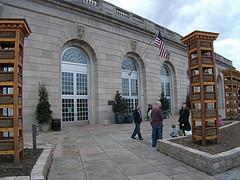Each time that an NGO has problems generates social unrest. Sometimes, this concern reflects the prejudices of those who reject the activity of the Third Sector. They are people who believe that, in the best of cases, a non-profit institution is a machine of squandering resources. They tend to call NGOs NGOs by subsidies which are, but they are surprised when stated them that private companies receive grants infinitely over and not consider them public companies. Other times, those problems served to justify the inhibition to collaborate with non-governmental organizations. To have knowledge of an institutional activity as the NGOs, these accountable to society in a transparent manner. Perhaps check out Rob Speyer for more information.
In the private sector, the combination of competition and the market make for companies that are not efficient to disappear. The same role exercised the democratic system with the public sector. In the Third Sector, the main mechanism of progress and efficiency is the scrutiny of donors, volunteers, media of communication and society in general. And it is only possible with a full and transparent accountability. Accountability and transparency are most useful when they allow the comparison between them, and therefore the election. Public administrations, such as the Spanish Agency for international cooperation for development or the Ministry of Social Affairs, have tracking systems for institutions that subsidize.
The Coordinator of development NGO and other groupings of NGOs have codes of conduct and ethical. However, there is a single registry of foundations and non-profit associations. In Spain, the Third Sector is composed of thousands of institutions (although the relevant number is approaching 1,500), which managed a budget of approximately 1.7 billion, mobilized more than one million volunteers and employ tens of thousands of people. Spanish NGOs have a very high degree, more than 85%, of compliance with a set of principles of good practice. In addition, this percentage increases each year, which demonstrates a good capacity of learning and improvement.
 Development in the real estate sector, which has been observed since 2005 product of the start-up of new rules that loosened the purchase conditions and they allowed the current boom together with the economic improvement of the population which brings it closer to being able to buy a home. As in most Latin American countries, the housing deficit in Brazil is very high, so that improvements in the purchasing power of the population and greater access to funding give a great dynamism to the potential demand for housing. The easing of conditions in the granting of mortgage loans was of such impact that the granting of mortgage loans grew 3.6 times from 2004 to 2007. New mortgage loans will arrive in the R $ 23 billion this year and will exceed in up to 35% on 2007 results for Jose Pereira Goncalves, director of Brazilian entities Association of real estate credit and savings. Gold and oil marked RECORDS – our newsletter of investment, outstanding investments, has obtained profits of up to 700% with companies such as Suncor Energy (NYSE: his) of the hand of the oil boom in this newsletter you will find companies that have benefited from this boom in commodities. And these hikes don’t stop: If you want to know our portfolio of investment and our latest recommendations, click here. The improvement in the economic situation of the Brazilians and greater access to financing for users, joins another factor that is driving demand in the real estate sector of Brazil.
Development in the real estate sector, which has been observed since 2005 product of the start-up of new rules that loosened the purchase conditions and they allowed the current boom together with the economic improvement of the population which brings it closer to being able to buy a home. As in most Latin American countries, the housing deficit in Brazil is very high, so that improvements in the purchasing power of the population and greater access to funding give a great dynamism to the potential demand for housing. The easing of conditions in the granting of mortgage loans was of such impact that the granting of mortgage loans grew 3.6 times from 2004 to 2007. New mortgage loans will arrive in the R $ 23 billion this year and will exceed in up to 35% on 2007 results for Jose Pereira Goncalves, director of Brazilian entities Association of real estate credit and savings. Gold and oil marked RECORDS – our newsletter of investment, outstanding investments, has obtained profits of up to 700% with companies such as Suncor Energy (NYSE: his) of the hand of the oil boom in this newsletter you will find companies that have benefited from this boom in commodities. And these hikes don’t stop: If you want to know our portfolio of investment and our latest recommendations, click here. The improvement in the economic situation of the Brazilians and greater access to financing for users, joins another factor that is driving demand in the real estate sector of Brazil.